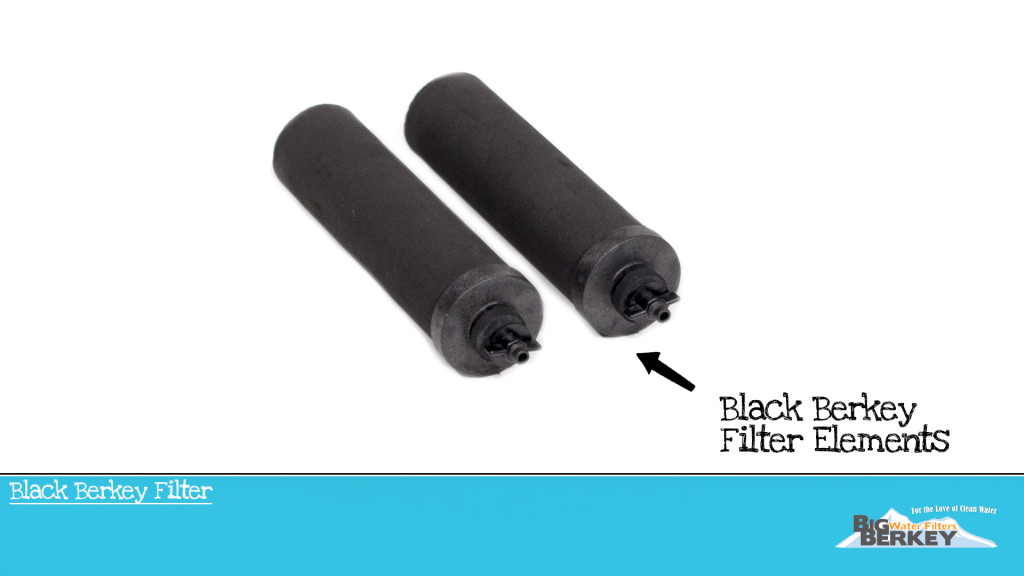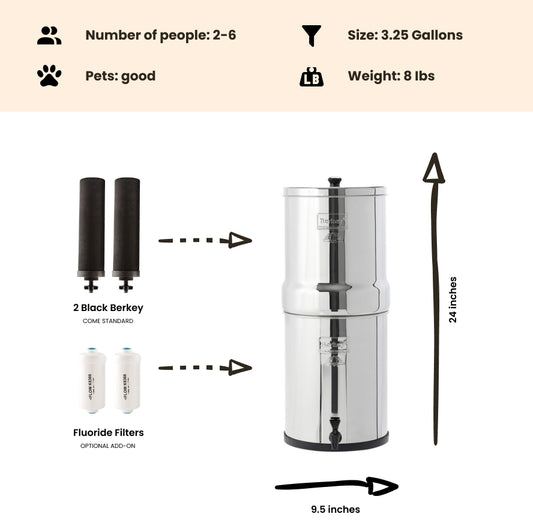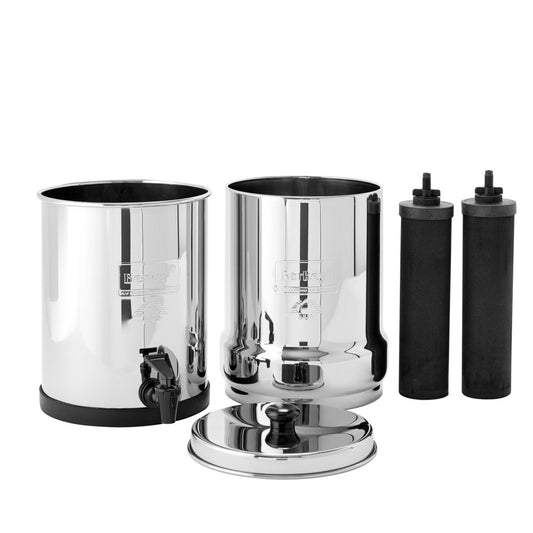
Do the Black Berkey Purification Elements remove leptospirosis from the water?
By Dan DeBaunShare
We are getting many questions recently regarding the ability of the Berkey water filter to remove Leptospira. In a nutshell; The upper chamber Black Berkey purification elements that come standard with our berkey systems have been tested to remove viruses 8 times smaller in size than the Leptospira virus. This suggests that contaminants much larger like Leptospira should easily be removed. However, since specific testing of Leptospira has not yet been conducted, the company cannot officially make that claim.
What is Leptospira?
Leptospira is a bacterium that exists around the world but is most prevalent in hot, wet climates.
“Leptospirosis is a bacterial infection caused by certain members of the genus Leptospira. Most people who develop a leptospirosis infection only get mild symptoms, but a bit more serious influenza-like symptoms are also quite common. In a minority of infected persons, leptospirosis develops into the dreaded Weill’s disease. Weill’s disease is a serious condition that can involve liver failure, kidney failure, meningitis and sepsis. Weill’s disease can be lethal.
Urine and blood from a leptospirosis infected person or animal can contain a sufficient amount of bacteria to spread the disease. A common transmission route for humans is getting urine or blood from an infected animal on damaged skin. Even a tiny skin abrasion can be enough for the bacteria to get into the body. Leptospira bacteria can also enter the body through mucous membranes, e.g. those found in the eyes, nose, mouth and genitals.
When infected blood or urine gets into water or soil, the bacteria can survive there for several months. Contract with contaminated water or soil can be enough to catch leptospirosis, e.g. if you have a small abrasion on your skin or get water/soil onto a mucous membrane. Also keep in mind that water and soil can contaminate food, and food can also be directly contaminated by urine and blood.” https://www.leptospirosis.org/introduction/
The size of Leptospira bacteria
Leptospira are incredibly small – they can pass through the pores in water filters, even those that claim to remove bacteria. They will pass easily through filters with a pore size of more than 0.2 micron, including membrane and charcoal types. High-pressure laboratory filters with a pore size of less than 0.1 micron will block them, but the typical hand-held water filters used by hikers, pool filters and the fitted canisters used in some domestic kitchen appliances are useless at removing leptospires – they are often used to separate leptospires from other bacteria when preparing samples for research, as the leptospires pass through but other bacteria don’t!
“The Leptospira bacteria are in general about 0.1µm in diameter and 10-20µm in length (0.2 to 0.3 microns in diameter; 6 to 30 microns in length). In comparison, a red blood cell is about 7µm in diameter, so despite being quite long, the very small width of leptospires makes them difficult to see under optical microscopes unless a contrast-enhancing technique such as dark-field is used.”
https://www.leptospirosis.org/bacteria/
Why is the micron size of Leptospira important?
A “micron” is an abbreviated term for “micrometer”, or a millionth of a meter (1/1,000,000 meters). This is about .00004 inches. For Size comparison, a human red blood cell is about 5 microns across. A human hair is about 75 microns across (depending on the person).” ** Working down to a smaller scale 1 micron = 1,000 nanometers and .1 micron = 100 nanometers The Black Berkey purification elements can reduce viruses down to the nanometer scale, in the tested range of 24-26 nanometers: From our FAQ:
Is the MS2 - Fr Coliphage still known to be a good indicator of virus filtration? At least one article suggests that it might not be. Do you have tests on any other viruses?
MS2 and Fr Coliphage are two separate virus with two different removal characteristics. That is why they are used as surrogates for other types of virus. These virus were selected, by both the EPA and the Military, because of their small size relative to other virus strains and the difficulty in removing both strains. They each are approximates 24-26 nanometers in size which makes them among the smallest of virus. To see their relative size we would suggest that you visit The University of Utah Cell Size and Scale Chart. These virus are comparable in size on that chart to the Rhonivirus. Therefore, in answer to your question, yes MS2 and Fr Coliphage are the ideal virus for use as indicators of a purification systems ability to remove virus.
MS2 and FR Coliphage are approx 24-26 nanometers in size (.024 to .026 microns) and have been tested and shown to be removed by the black berkey filter elements. These 2 viruses are approx 8 times smaller than the Leptospira bacteria at .20-.30 microns, that is currently being found in water.
What additional precautions should be taken if I suspect Leptospira is in my water?
The Berkey water purification systems can efficiently purify raw untreated pond, lake and river water. However, always use the cleanest and clearest water possible. As an additional precaution, if using a source of water that you believe might contain extreme viral and bacteriological contamination, it is recommended by the CDC, EPA and other organizations that approximately sixteen drops of plain bleach (sodium hypochlorite) or iodine per gallon be added to treat the source water before purifying. This should kill minute pathogens such as viruses, within 30 minutes.
The disinfectant will be removed from the treated water entirely with the Berkey system, including any odor or taste. For more information about disinfecting water, please reference the following links. cdc.gov or water.epa.gov The fact that Black Berkey purification elements have been tested to remove viruses to the nanometer range suggests that contaminants much larger in size, such as Leptospira should also be removed. Nonetheless, since actual testing of Leptospira has not yet been conducted, NMCL can’t officially make that claim.
-
Regular price $234.00 USDRegular priceUnit price / per
-
Regular price $327.00 USDRegular priceUnit price / per
-
Regular price From $367.00 USDRegular priceUnit price / per
-
Regular price From $408.00 USDRegular priceUnit price / per
-
Regular price From $451.00 USDRegular priceUnit price / per
-
Regular price From $478.00 USDRegular priceUnit price / per
-
Regular price $332.50 USDRegular priceUnit price / per
$350.00 USDSale price $332.50 USDSale

Dan DeBaun is the owner and operator of Big Berkey Water Filters. Prior to Berkey, Dan was an asset manager for a major telecommunications company. He graduated from Rutgers with an undergraduate degree in industrial engineering, followed by an MBA in finance from Rutgers as well. Dan enjoys biohacking, exercising, meditation, beach life, and spending time with family and friends.
~ The Owner of Big Berkey Water Filters

















